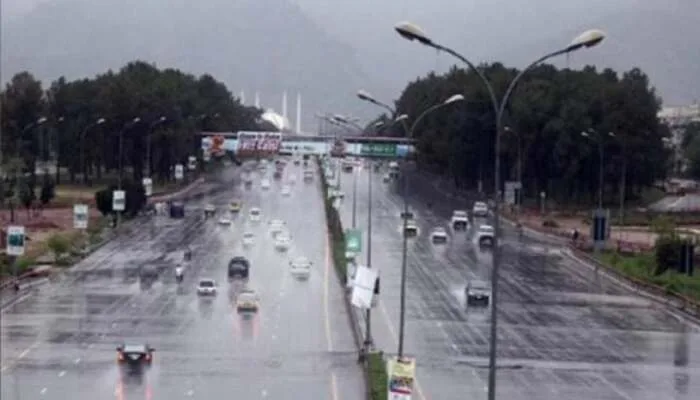A powerful Islamabad hailstorm hit the federal capital on Wednesday evening, breaking the recent stretch of hot and dry weather. The sudden burst of rain, strong winds, and intense hail caught many residents off guard and led to a sharp drop in temperature across the city.
Sudden Weather Shift
The day began with hot and humid conditions, as temperatures soared between 34°C and 36°C with humidity hovering around 64%. However, as evening approached, dark clouds rolled in over Islamabad and surrounding areas, signaling an abrupt change in the weather.
Within hours, a fierce hailstorm accompanied by gusty winds swept through the city. The heavy rainfall cooled down the atmosphere significantly, offering momentary relief from the heat.
Read: China’s Crucial Role in Pakistan’s IMF Deal and Agricultural Revival
Damage from Hail
While the weather change was welcomed by many seeking respite from the heat, it also caused significant disruption. The hailstorm damaged several vehicles, shattering windshields and denting car bodies in multiple areas of the city.
Residents reported scenes of chaos as the storm hit. Parked vehicles bore the brunt of the icy onslaught, with broken glass littering the streets. Social media was soon flooded with images and videos of large hailstones covering roads and rooftops.
Weather Department’s Forecast
Earlier in the day, the Pakistan Meteorological Department (PMD) had issued a forecast warning of partly cloudy skies, thunderstorms, and the possibility of hailstorms for Wednesday evening. The sudden intensity of the storm, however, took many by surprise.
PMD officials said that the weather activity was part of a passing westerly wave affecting upper and central parts of the country. Isolated showers and strong winds were also reported in several nearby regions.
Temporary Relief, More Heat Ahead
Although the storm brought a welcome break from the rising heat, it is expected to be short-lived. The PMD predicts that hot and dry weather will return to Islamabad by Thursday, with similar conditions continuing into Friday.
Authorities have advised residents to stay updated on weather alerts and take precautions, especially in areas prone to flash flooding and wind damage.
Broader Impact Across Regions
The storm in Islamabad was part of a wider weather disturbance across the northern and central areas of Pakistan. Other cities also experienced light to moderate rain along with strong winds. In many places, the storm provided much-needed moisture to the parched atmosphere but also disrupted daily life.
Despite the temporary inconvenience, many citizens welcomed the brief cool spell. After weeks of intense heat, the hailstorm served as a reminder of the unpredictable nature of spring weather in the region. With temperatures expected to rise again soon, the capital’s residents are bracing for more typical April heat in the coming days.
Follow us on Google News, Instagram, YouTube, Facebook,Whats App, and TikTok for latest updates
